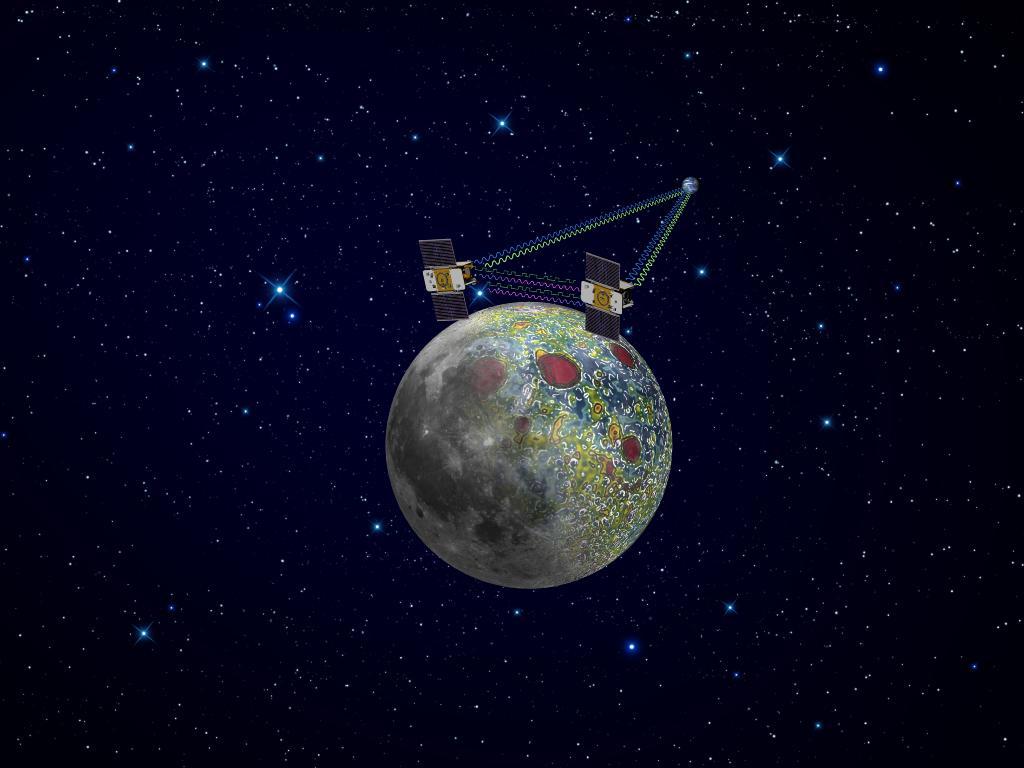NASA’s second Grail satellite sent to map Moon’s gravity
Using a precision formation-flying technique, the twin GRAIL spacecraft will map the moon’s gravity field, as depicted in this artist’s rendering.
NASA has successfully put the second of its two Grail satellites into orbit around the Moon, where they will map its gravity in order to discover what lies beneath its surface.
The second Gravity Recovery and Interior Laboratory spacecraft, known as Grail-B, achieved lunar orbit at 5:43 PM EST yesterday, NASA announced, one day after Grail-A reached its destination.
More from GlobalPost: NASA Grail gravity-mapping satellite now orbiting the Moon
The two identical spacecraft will send radio signals to each other as they orbit, allowing them to monitor the exact distance between them.
According to NASA:
As they fly over areas of greater and lesser gravity caused by visible features such as mountains and craters, and masses hidden beneath the lunar surface, the distance between the two spacecraft will change slightly.
Scientists will translate this information into a high-resolution map of the moon's gravitational field. The data will allow scientists to understand what goes on below the lunar surface.
The information the satellites collect will be used to work out how the Moon was formed, lead scientist Dr Maria Zuber of the Massachusetts Institute of Technology told the BBC.
One of the biggest mysteries researchers hope to solve is why the far side of the Moon looks so different from the near side, she said. Scientists have not yet been able to explain why the far side is covered in craters, while the near side has smooth plains formed by ancient volcanic magma.
According to the BBC, one theory the Grail data will test is that Earth once had a second, smaller moon, which crashed into the larger one and gave the far side its craters. Dr Zuber said:
"Given that we've sent so many missions that have studied the outside of the Moon, it seems that the answer is not on the surface. The answer is locked in the interior."
NASA will spend the next two months adjusting the spacecrafts' path until they are flying in tandem over the lunar poles, the Telegraph reported. They will then spend two months mapping the Moon between March and June, after which the Moon will go into eclipse behind the Earth and the spacecraft risk running out of battery in the darkness.
Watch NASA scientists celebrate as Grail-A reached lunar orbit on Dec. 31:
